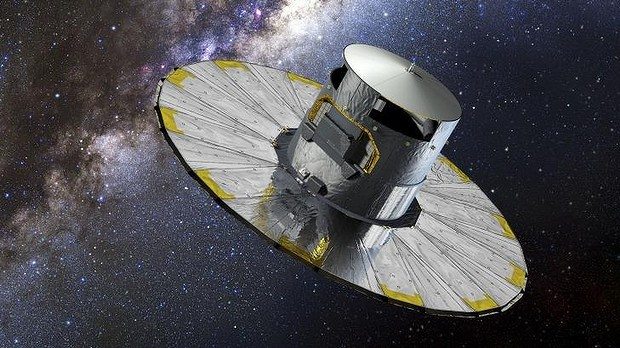Europe Launches Billion Dollar Telescope
Peter Edward / 11 years ago
 An artists impression of the Gaia Telescope
An artists impression of the Gaia Telescope
The ESA (European Space Agency) has successfully launched a highly advanced telescope into space, it’s mission will be to detect over a billion stars whilst providing the most detailed map of the Milky Way Galaxy to date. The Gaia telescope was successfully launched from a Soyuz-STB-Fregat rocket from the ESA’s base in Kourou, French Guiana. The $1.4 billion telescope is the most sophisticated and hi-etch space telescope ever built by ESA and aims to build a “astronomical census” of over a billion stars, roughly 1% of all the stars in the Milky Way.
Gaia will not only be measuring distance, speed, direction and motion of these stars to create a 3D map of our section of the galaxy. It will also be on the look out for new planets beyond our Solar System, with as many as 50,000 so called “extra-solar planets” hoping to be spotted during the telescopes five year life and mission. Gaia will also be on the lookout for asteroids that could one day threaten Earth with the telescope mainly focusing on the massive asteroid belt between Mars and Jupiter as well as looking for the distant explosion of exploding stars also known as a supernovae. Something that is rarely recorded let alone observed in real time, which this h-tech telescope will be capable of doing.
Jean-Yves Le Gall, head of the France National Center of Space Studies (CNES) which is taking lead of this mission had this to say;
‘We are at the dawn of revolutionizing our understanding of the history of the Milky Way. Gaia is the culmination of nine years of intense work which will enable exceptional advances in our understanding of the universe, it’s history and laws.” The 2-tonne telescope is so sensitive that it can measure the equivalent of the diameter of a hair at the distance of 1000 kilometers.”
Gaia will start it’s mission in May when it takes up a position at the Lagrange point L2, which is located about 1.5 million kilometers from Earth. This position with offer year round observation of the cosmos with out being disturbed by the Earth, Moon or the Sun blocking its view. It will take years after the Gaia’s mission has finished to transform the million billion bytes of raw data into usable maps, catalogs and eventually a 3D map of our section of the Milky Way.
Thank you The Sydney Morning Herald for providing us with this information.
Image courtesy of The Sydney Morning Herald.



















